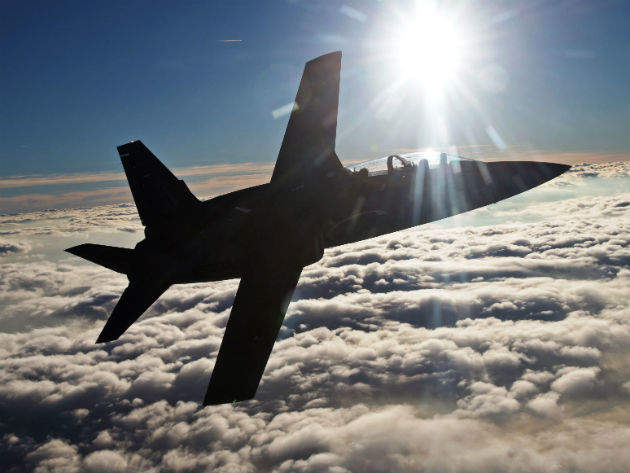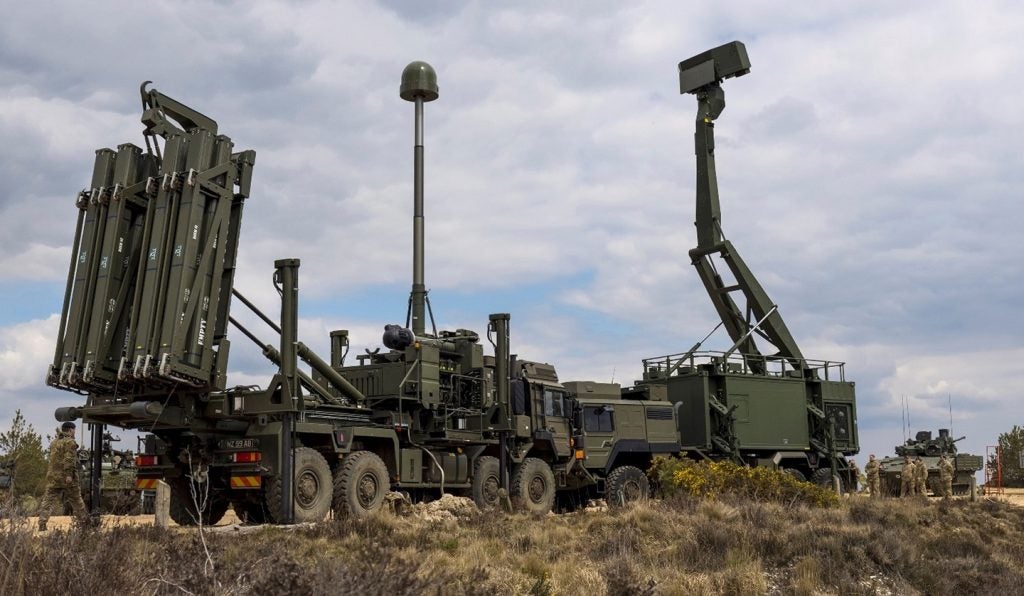

The UK’s Air Support to Defence Operational Training (ASDOT) programme aims to meet the training component of UK air support across the Air Force, Navy, Army and Joint Forces Commands from 2020, progressively replacing existing contracted and military service provision as these programmes expire or reach their planned end of service date.
In June 2016 the UK Ministry of Defence (MoD) released information on what the UK Military Flight Training Systems Project Team would be seeking from the multi-phased programme. These requirements – still subject to refinement – currently cover the provision of live flying assets to meet training requirements for air to air combat; air to surface combat; joint terminal attack controller / forward air controller (airborne); electronic warfare; air traffic control, ground based air defence and aerospace battle management; and live gunnery.
Under current planning assumptions the programme will be delivered in incremental phases. Phase one will be introduced from 2020 for 15 years (at an estimated value of £750m); phase two could add another £300-500m over the remaining eight years.
Sourcing solutions
With an investment decision expected by the end of 2016 and the formal competition set to be launched in 2017, industry players are already lining up to set out their stalls.
First off the blocks to register interest is a collaboration between QinetiQ, Thales and Textron AirLand, which signed a memorandum of understanding (MoU) at Farnborough Airshow in July to bid for the programme.
How well do you really know your competitors?
Access the most comprehensive Company Profiles on the market, powered by GlobalData. Save hours of research. Gain competitive edge.

Thank you!
Your download email will arrive shortly
Not ready to buy yet? Download a free sample
We are confident about the unique quality of our Company Profiles. However, we want you to make the most beneficial decision for your business, so we offer a free sample that you can download by submitting the below form
By GlobalDataThe three companies are well-positioned to bring together the operational training activities that comprise the ASDOT programme – currently fulfilled by a number of providers, both military and civilian – into a single managed service.
“The joint team is working on an innovative, cost effective and technologically advanced solution that will offer a value-for-money managed service utilising the Textron AirLand Scorpion jet,” says Paul Dingley, strategic campaign lead for defence operational training at QinetiQ. "This aircraft will be equipped with Thales and QinetiQ sensors and will provide a broad spectrum of training for all three UK armed services.”
The Textron AirLand Scorpion has been specifically designed as a versatile, low-cost tactical jet. With a centre payload bay and six hard points the aircraft can be configured with an intelligence, surveillance and reconnaissance (ISR) payload and weapon sets (including precision guided munitions for precision strike). Its high dash speeds, extended endurance and loiter time at cruise speeds allow the aircraft to be applied to the spectrum of mission sets, including ISR, close air support, armed reconnaissance, maritime and border patrol and jet training.
This flexibility is at the core of the aircraft’s positioning as an advanced fast jet training solution, with QinetiQ and Thales selecting the Scorpion after a comprehensive analysis of over 50 aircraft. According to QinetiQ, this selection was based on the aircraft’s “multi-mission capability, combined with unparalleled acquisition and operating costs and a dispatch reliability rating exceeding 98%”.
The aircraft can download 4th and 5th generation training tasks, and has dual cockpits with a modular adaptable mission system to allow pilots in many aviation disciplines to train across jet operations that employ multi-spectral sensors and precision guided weapons.
The right solution?
According to Dingley, QinetiQ will lead on the work required to introduce a mixed fleet of Scorpion and other platforms into the UK with a focus on safety and cost-effectiveness.
”QinetiQ will also integrate the sensors and jamming pods into the mixed aerial fleet and lead on the UK certification of the Scorpion aircraft to ensure compliance with military air worthiness regulations,” he said. “The joint solution will include a provision for the introduction of synthetic operational training and airborne aerial target capabilities.
“QinetiQ has a rich background in cost effective aircraft operations and fast jet expertise, providing significant savings to the MoD – the Empire Test Pilots’ School being a prime example. We will look to continue to provide significant overall savings to the MoD while offering the highest standard of service for ASDOT.”
QinetiQ’s role will also include an element of maintenance and the provision of pilots.
Thales will draw on its experience in delivering fully managed training services and engineering bespoke high fidelity training equipment such as its full mission simulators for the A400M, Voyager, Tornado, Rafale, Mirage 2000, Hawk and Eurofighter. The company will also be responsible for providing a range of sensors optimised for situational awareness, threat replication and targeting training, as well as Electronic Warfare capability.
”Collaborative working of this nature, for programmes of this size and importance, is vital within both the aerospace and defence industries,” Dingley said. “This partnership puts us in a strong position to succeed and enables us to look at solutions that will offer the highest standard of support to UK defence operational training.”
The joint team is currently working through various requirement scenarios to ensure that all challenges can be identified early and rectified before bid submission in mid-2017.
Other contenders
The rest of the contenders for the ASDOT programme are still firming up. A team consisting of CAE and Draken International are understood to be interested in the programme, having signed an MoU at the Royal International Air Tattoo in July to pursue “global opportunities related to the provision of advanced adversary and aggressor air training services”.
Together these companies are pursing Canada’s Contracted Airborne Training Services programme, with a solution based around CAE's virtual and constructive simulation technologies and Draken's fighter aircraft. Under the MoU CAE and Draken are now looking to expand this cooperation into integrated live-virtual-constructive training in areas such as air combat support, contracted adversary and aggressor air training, embedded simulation, tactical training, threat simulation and JTAC training. They anticipate pursuing “opportunities in markets including the United Kingdom and other parts of Europe; Australia and other parts of Asia/Pacific; and North America”.
How the ASDOT programme continues to shape up over the next six months will be interesting to see. Countries including Australia, the US and Canada are in the process of upgrading their airborne training capabilities so the market is rich with offerings from consortiums at the top of their game. Presumably the UK will have a strong field of contenders to choose from.







